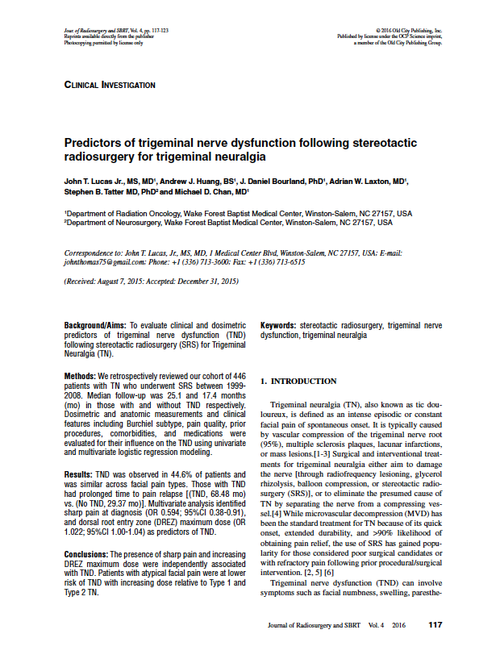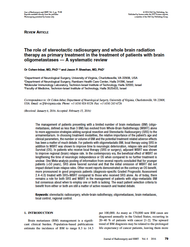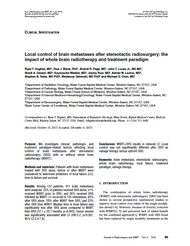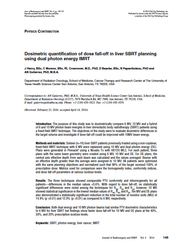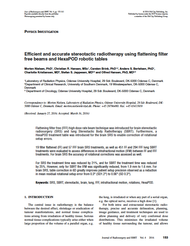- Home
- Journal Contents Downloads
- JRSBRT Downloads
- JRSBRT 4.2, p. 117-123
Product Description
Clinical Investigation
Predictors of trigeminal nerve dysfunction following stereotactic radiosurgery for trigeminal neuralgia
John T. Lucas Jr., Andrew J. Huang, J. Daniel Bourland, Adrian W. Laxton, Stephen B. Tatter and Michael D. Chan
Background/Aims: To evaluate clinical and dosimetric predictors of trigeminal nerve dysfunction (TND) following stereotactic radiosurgery (SRS) for Trigeminal Neuralgia (TN).
Methods: We retrospectively reviewed our cohort of 446 patients with TN who underwent SRS between 1999- 2008. Median follow-up was 25.1 and 17.4 months (mo) in those with and without TND respectively. Dosimetric and anatomic measurements and clinical features including Burchiel subtype, pain quality, prior procedures, comorbidities, and medications were evaluated for their influence on the TND using univariate and multivariate logistic regression modeling.
Results: TND was observed in 44.6% of patients and was similar across facial pain types. Those with TND had prolonged time to pain relapse [(TND, 68.48 mo) vs. (No TND, 29.37 mo)]. Multivariate analysis identified sharp pain at diagnosis (OR 0.594; 95%CI 0.38-0.91), and dorsal root entry zone (DREZ) maximum dose (OR 1.022; 95%CI 1.00-1.04) as predictors of TND.
Conclusions: The presence of sharp pain and increasing DREZ maximum dose were independently associated with TND. Patients with atypical facial pain were at lower risk of TND with increasing dose relative to Type 1 and Type 2 TN.
Keywords: stereotactic radiosurgery, trigeminal nerve dysfunction, trigeminal neuralgia
 Loading... Please wait...
Loading... Please wait...

